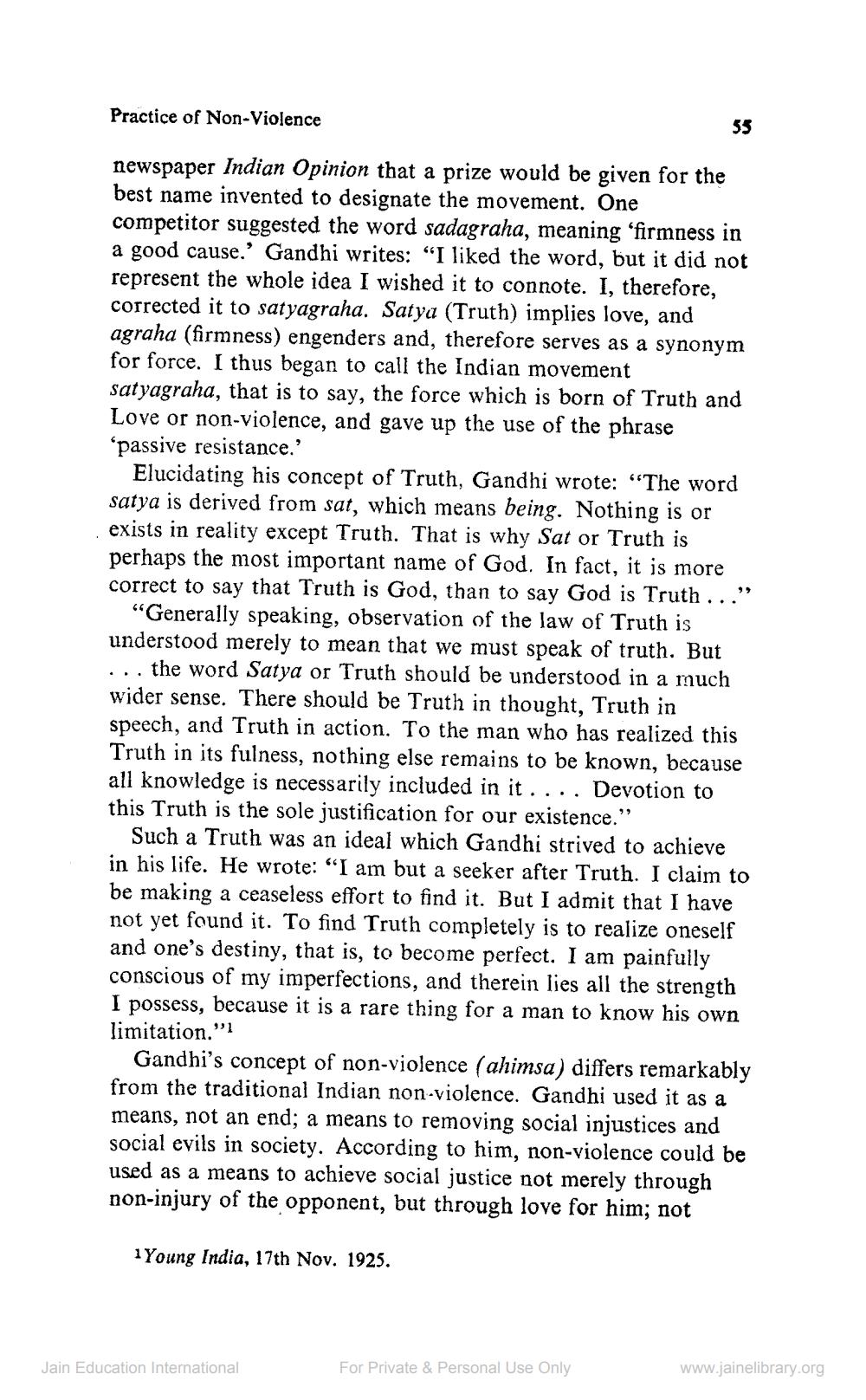________________
Practice of Non-Violence
newspaper Indian Opinion that a prize would be given for the best name invented to designate the movement. One competitor suggested the word sadagraha, meaning 'firmness in a good cause.' Gandhi writes: "I liked the word, but it did not represent the whole idea I wished it to connote. I, therefore, corrected it to satyagraha. Satya (Truth) implies love, and agraha (firmness) engenders and, therefore serves as a synonym for force. I thus began to call the Indian movement satyagraha, that is to say, the force which is born of Truth and Love or non-violence, and gave up the use of the phrase 'passive resistance.'
Elucidating his concept of Truth, Gandhi wrote: "The word satya is derived from sat, which means being. Nothing is or exists in reality except Truth. That is why Sat or Truth is perhaps the most important name of God. In fact, it is more correct to say that Truth is God, than to say God is Truth..." "Generally speaking, observation of the law of Truth is understood merely to mean that we must speak of truth. But
the word Satya or Truth should be understood in a much wider sense. There should be Truth in thought, Truth in speech, and Truth in action. To the man who has realized this Truth in its fulness, nothing else remains to be known, because all knowledge is necessarily included in it. Devotion to this Truth is the sole justification for our existence."
Such a Truth was an ideal which Gandhi strived to achieve in his life. He wrote: "I am but a seeker after Truth. I claim to be making a ceaseless effort to find it. But I admit that I have not yet found it. To find Truth completely is to realize oneself and one's destiny, that is, to become perfect. I am painfully conscious of my imperfections, and therein lies all the strength I possess, because it is a rare thing for a man to know his own limitation."
Gandhi's concept of non-violence (ahimsa) differs remarkably from the traditional Indian non-violence. Gandhi used it as a means, not an end; a means to removing social injustices and social evils in society. According to him, non-violence could be used as a means to achieve social justice not merely through non-injury of the opponent, but through love for him; not
1Young India, 17th Nov. 1925.
55
Jain Education International
For Private & Personal Use Only
www.jainelibrary.org




